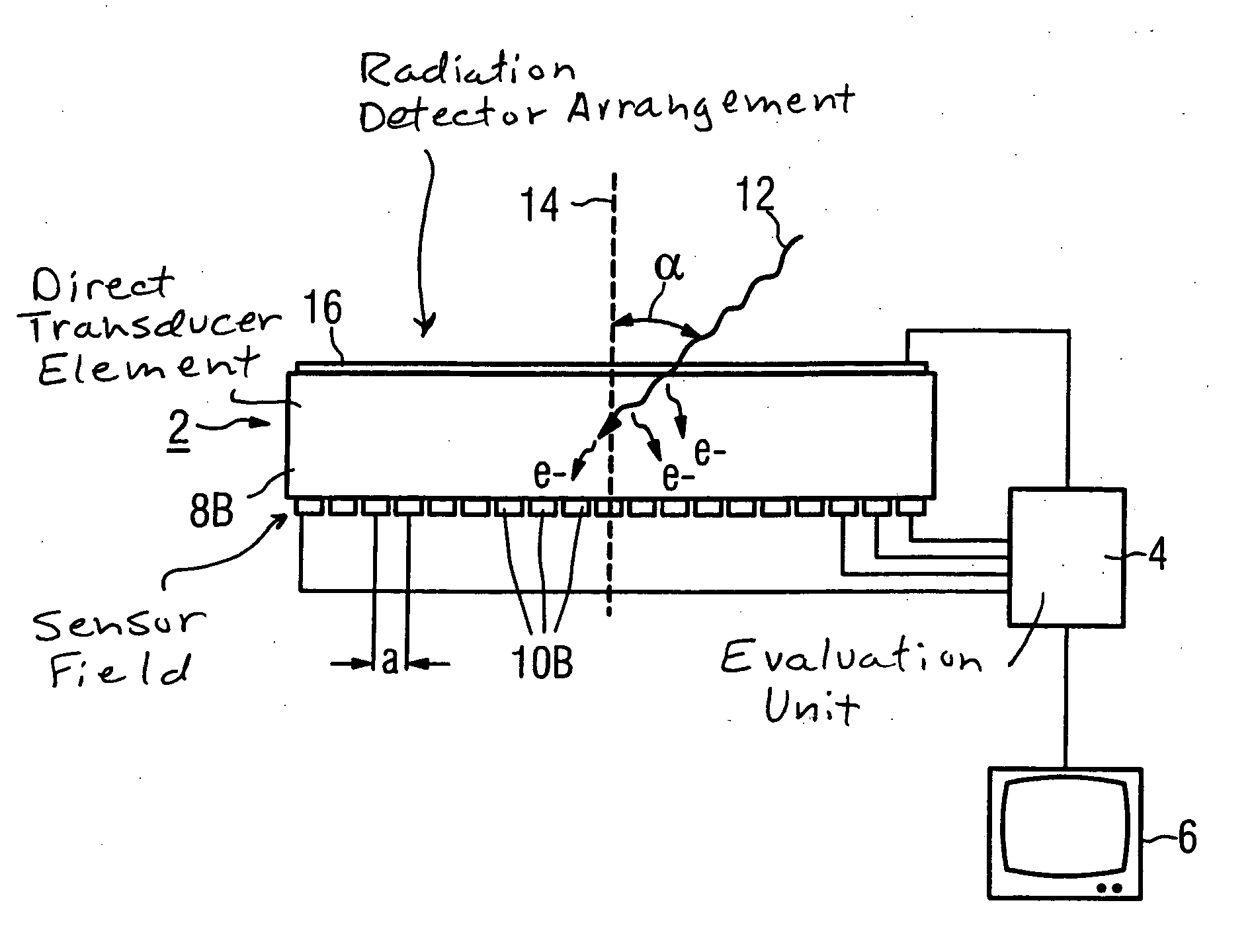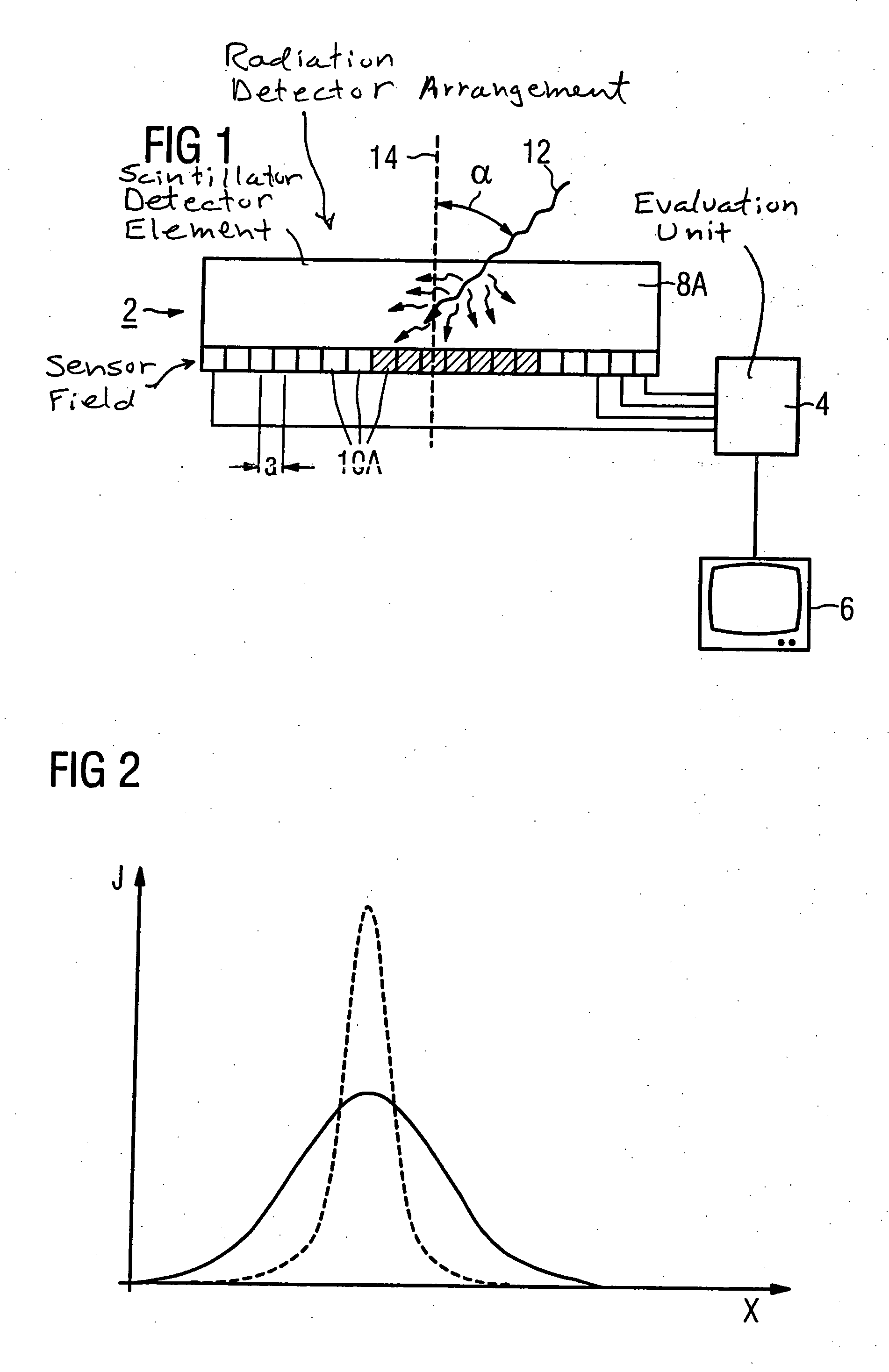Radiation detector and detection method, and medical diagnostic apparatus employing same
a technology of radiation detector and detection method, applied in the direction of radiation intensity measurement, instruments, x/gamma/cosmic radiation measurement, etc., can solve the problems of high manufacturing cost, position-sensitive, and typical delicateness of collimators
- Summary
- Abstract
- Description
- Claims
- Application Information
AI Technical Summary
Benefits of technology
Problems solved by technology
Method used
Image
Examples
Embodiment Construction
[0027] As shown in FIGS. 1 and 3, a detector arrangement HAS a detector 2, an evaluation unit 4 as well as a display element 6 connected with the evaluation unit 4. The detector 2 in FIG. 1 has a detector element 8A as well as a sensor field, arranged on the underside of the detector element 8A, with a number of sensor elements 10A arranged in a matrix. The detector 2 in FIG. 3 has a detector element 8B and sensor elements 10B. In each embodiment, the average separation a of two adjacent sensor elements 10A, 10B (thus the average separation a between their center points) is in the range between 10 μm-500 μm. Each of the sensor elements 10A, 10B in the matrix is connected with the evaluation unit 4. For better clarity, in the FIGS. 1 and 3 only some of the sensor elements 10A, 10B are shown connected with the evaluation unit 4.
[0028] In the exemplary embodiment of FIG. 1, the detector element 8A is a scintillator and the sensor elements 10A are photosensor elements. The sensor field...
PUM
 Login to View More
Login to View More Abstract
Description
Claims
Application Information
 Login to View More
Login to View More - R&D
- Intellectual Property
- Life Sciences
- Materials
- Tech Scout
- Unparalleled Data Quality
- Higher Quality Content
- 60% Fewer Hallucinations
Browse by: Latest US Patents, China's latest patents, Technical Efficacy Thesaurus, Application Domain, Technology Topic, Popular Technical Reports.
© 2025 PatSnap. All rights reserved.Legal|Privacy policy|Modern Slavery Act Transparency Statement|Sitemap|About US| Contact US: help@patsnap.com



